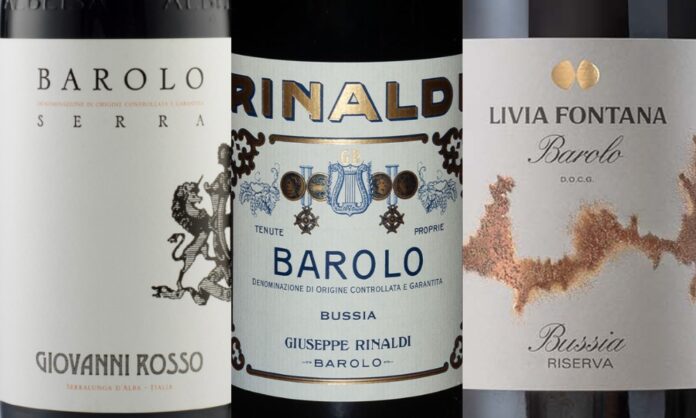
Una lista aggiornata dei migliori Barolo consigliati da Jean Marco Palmieri.
Vuoi indicarci un vino o un’azienda? Scrivici.
INDICE:
Migliori Barolo – Consigliati da Jean Marco Palmieri
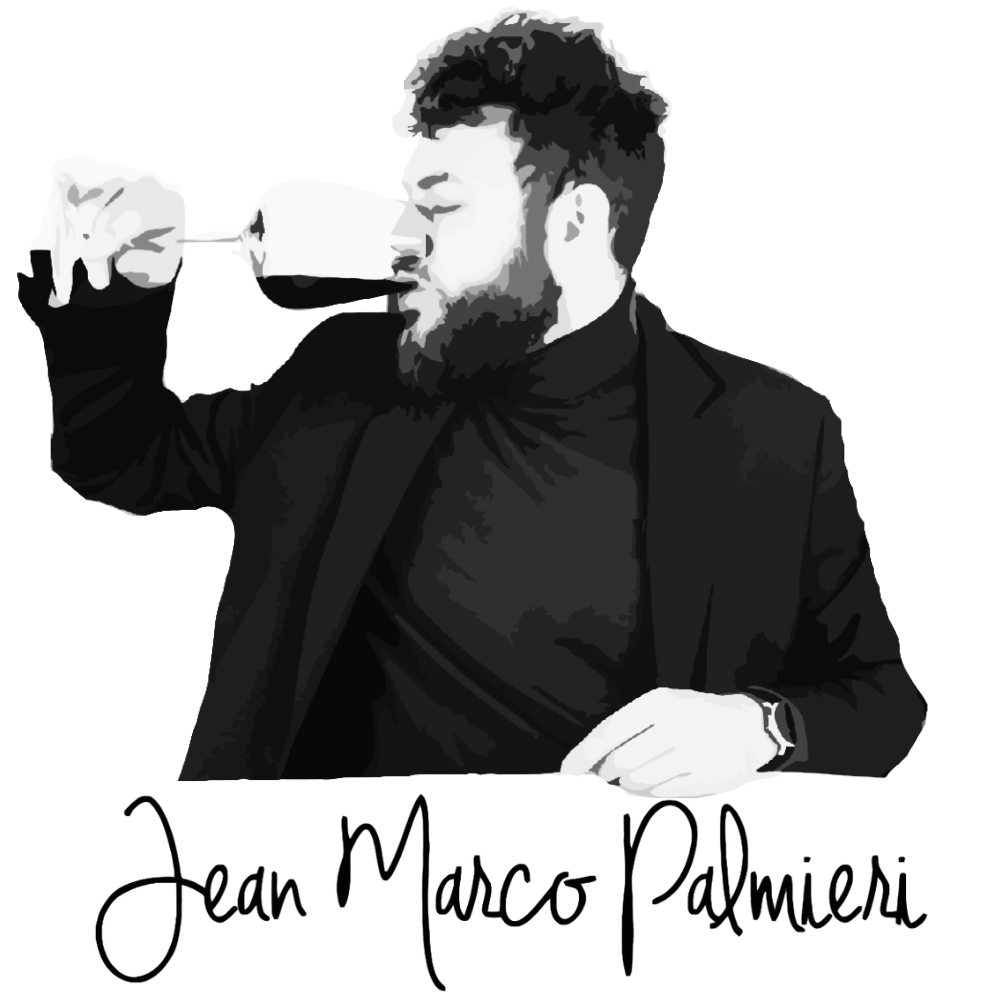
Quali sono i migliori Barolo?
Scopriamo insieme la lista aggiornata dei migliori Barolo con foto e degustazioni, affinché ognuno possa trovare il migliore Barolo adatto ai proprio gusti.
Barolo ‘Bussia’ 2019 – Rinaldi
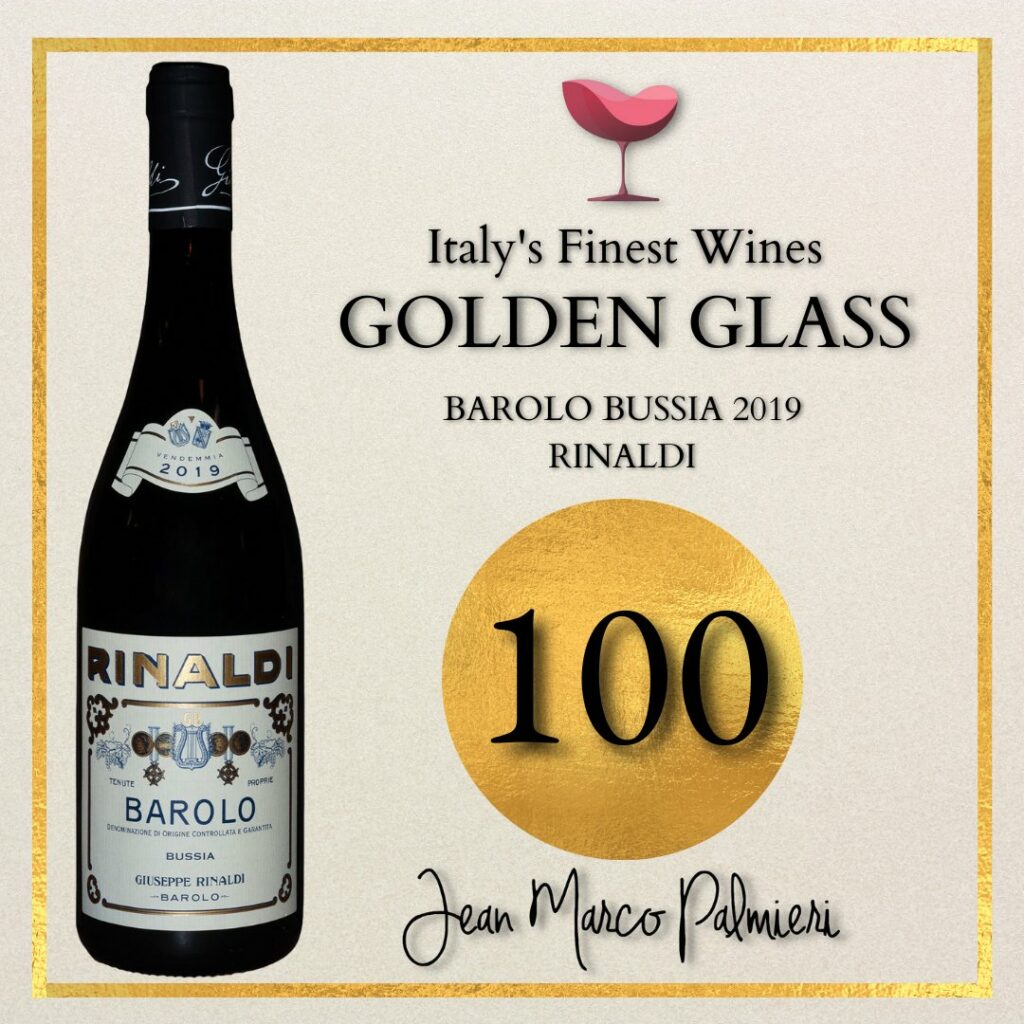
Descrizione:
Naso ricco di sfaccettature, tra aromi di lampone, fiori secchi e cenni balsamici mentolati e sidro. Al palato si sviluppa armonioso su una trama tannica avvolgente. La Fermentazione è spontanea e avviene per azione dei lieviti indigeni per circa 25 giorni in tini di rovere Slavonia.
Un vino iconico, tra i migliori vini italiani per la sincerità nel farsi narratore senza compromessi dell’espressività sensazionale del Barolo.
Zona dei Vigneti: Monforte d’Alba (Bussia)
Barolo Riserva Monfortino 2015 – Giacomo Conterno

Descrizione:
Si articola in un caleidoscopio di timbri floreali tra cui spicca glicine e violetta a cui seguono piccoli frutti rossi ed erbe officinali. Al palato è ricco e avvolgente, con tannini compatti e possenti che si evolvono in progressione verso finale di straordinaria persistenza.
Un vino storico e iconico nato dalle migliori annate e le migliori uve del rinomato cru Francia a Serralunga d’Alba nel 1978. Tra i migliori Barolo per potenziale d’invecchiamento.
Zona dei Vigneti: Serralunga d’Alba (Francia)
Barolo 2019 – Bartolo Mascarello

Descrizione : Intensi timbri di frutti rossi maturi, fiori appassiti proseguendo verso note di torrefazione, tabacco ritorni di canfora. La bocca è piena e asciutta, i tannini possenti e materici ben bilanciati da un’acidità di nerbo.
Uve provenienti dai vigneti Rué, San Lorenzo e Cannubi nel comune di Barolo e Rocche dell’Annunziata nel comune di La Morra. Fermentazione con lieviti indigeni in vasche di cemento, affinamento 32 mesi in botti di rovere di Slavonia.
Un vino classico di straordinario potenziale evolutivo, espressione ineffabile e sublime del carattere varietale del Nebbiolo.
Zona dei Vigneti: Barolo (Rué, San Lorenzo, Cannubi) La Morra (Rocche dell’Annunziata)
Barolo Bussia 2017 – Livia Fontana
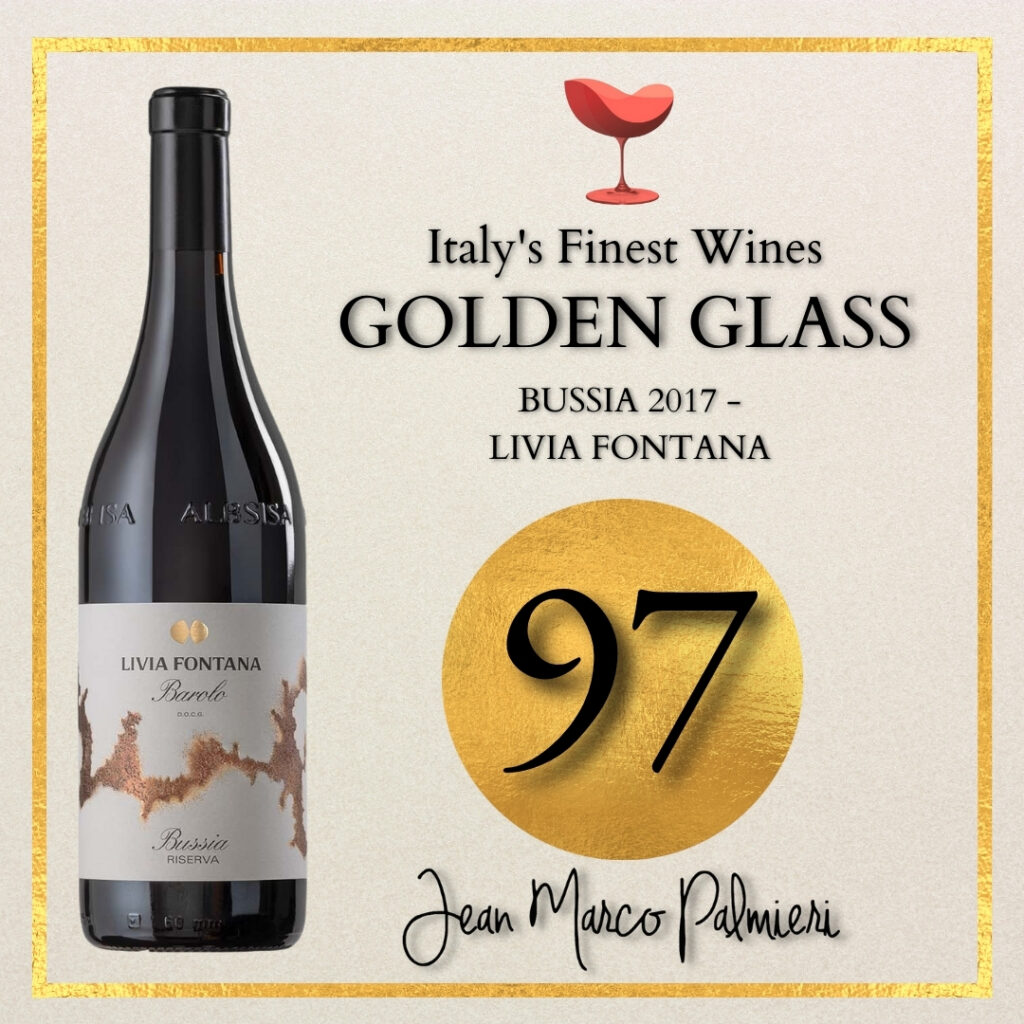
Descrizione:
Galvanizza il naso con un caleidoscopio di profumi spaziando da intensi sentori di frutti di bosco maturi, allusioni di prugna impreziositi da humus, canfora e resina di pino.
Al palato ha una trama tannica molto spessa e setosa a cui fa da contraltare da una importante spalla acida che conferisce freschezza e bevibilità. Finale voluminoso e armonico, di straordinaria persistenza.
Fermentazione in vasche di acciaio a temperatura controllata con frequenti rimontaggi e délestages. Macerazione di circa 20 giorni. Affinamento di almeno 30 mesi in botte di rovere tradizionale e successivamente in bottiglia fino alla messa in vendita.
Un vino dal sorso trascinante ed espansivo che massimizza il carattere eloquente ed elegante del Nebbiolo. Fantasioso e appassionante, a pieno titolo tra i migliori Barolo per finezza gusto-olfattiva.
Zona dei Vigneti: Monforte d’Alba (Bussia)
Barolo ‘Bricco delle Viole’ 2020 – Vajra
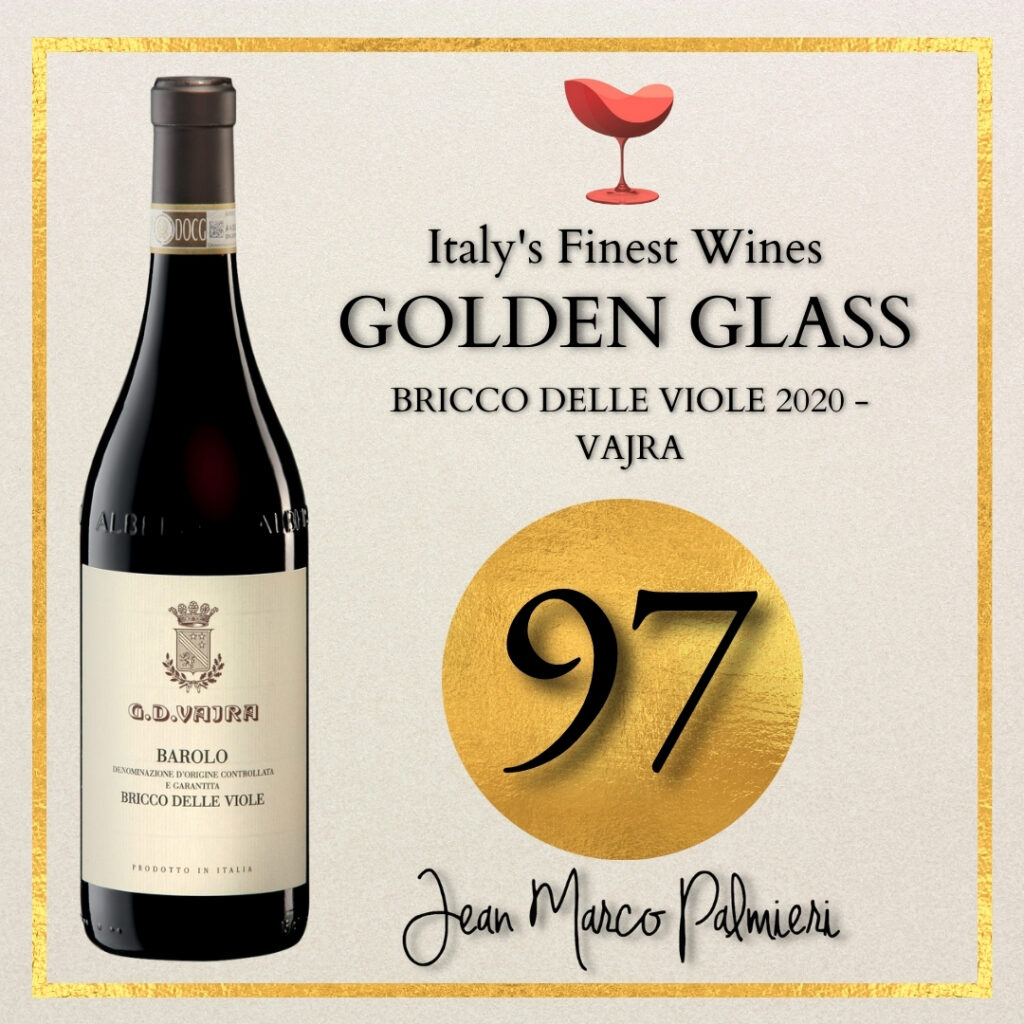
Descrizione: Titilla il naso con incisive note di rose appassite e ciliegia sotto spirito, seguono nuances di scorza d’arancia candita impreziosite da toni di polvere di cacao e timbri boisé ben integrati.
Galvanizza il palato con un tannino spesso ma levigato sinergicamente legato a un’acidità di nerbo che favorisce la beva. Finale di grande persistenza in cui riecheggia protagonista il varietale del nebbiolo. Affina 28 mesi in grandi botti di rovere di Slavonia, principalmente da
25 e 50 ettolitri.
Lo storico Bricco delle Viole è uno dei più celebri di di Barolo, che dà vita a vini contraddistinti per eleganza e freschezza. Vajra si conferma ancora una volta il suo virtuoso interprete.
Comune del Vigneti: Barolo (Bricco delle Viole)
Barolo ‘Ornato’ 2019 – Pio Cesare
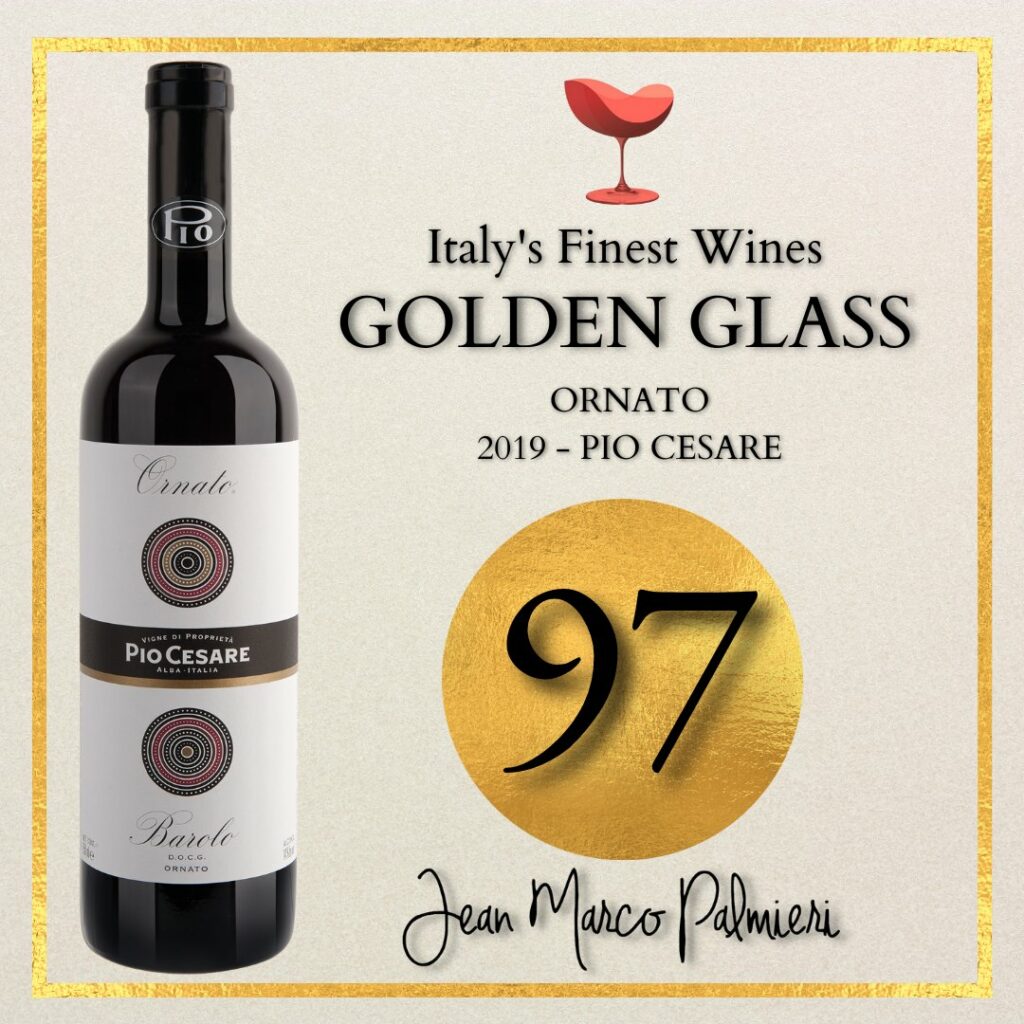
Descrizione:
Bouquet poliedrico e appassionate: tratteggia in esposizione lampone e ciliegia sotto spirito a cui si legano sensazioni di torrefazione, goudron e tabacco.
Al palato è materico con tannini fitti di grande spessore. Finale lungo, pulito e avvolgente.
Una delle più importanti cantine storiche delle Langhe, nata nel 1881.
Un vino espansivo ma anche verticale, a pieno titolo tra i migliori Barolo per dialettica sensazionale tra struttura ed eleganza.
Zona dei Vigneti: Serralunga d’Alba (Ornato)
Barolo Bricco Boschis Vigna San Giuseppe 2017 – Cavallotto
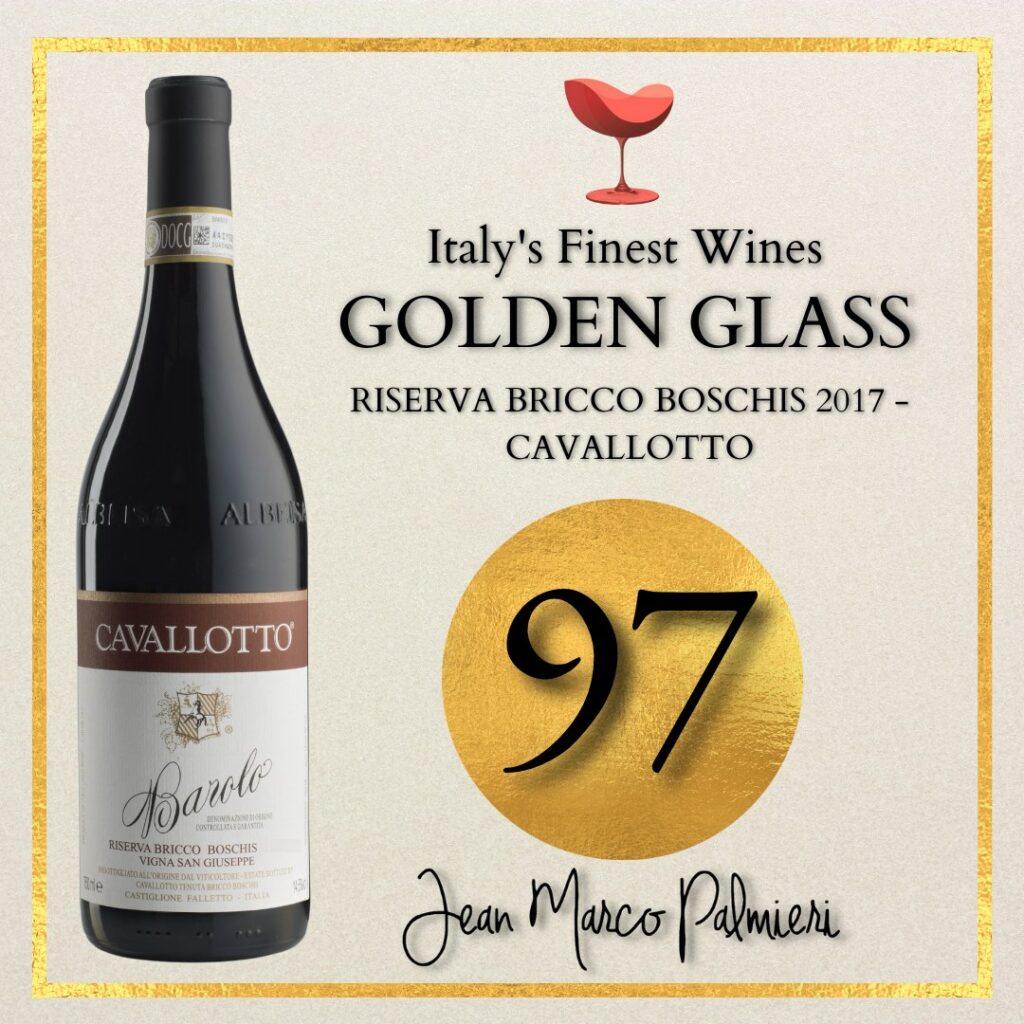
Descrizione:
Si presenta dal colore rosso rubino intenso, al naso si apre ampio e complesso spaziando da intensi sentori di frutti di bosco maturi, allusioni di prugna impreziositi da flora alpina, spezie dolci e tabacco.
Al palato è avvolgente con una trama tannica molto spessa ma vellutata coadiuvata da una importante spalla acida che conferisce grande freschezza.
Senza alcun dubbio uno dei migliori Barolo per stile classico e potenziale d’invecchiamento.
Zona dei Vigneti: Castiglion Falletto (Bricco Boschis)
Barolo Serra 2020 – Giovanni Rosso
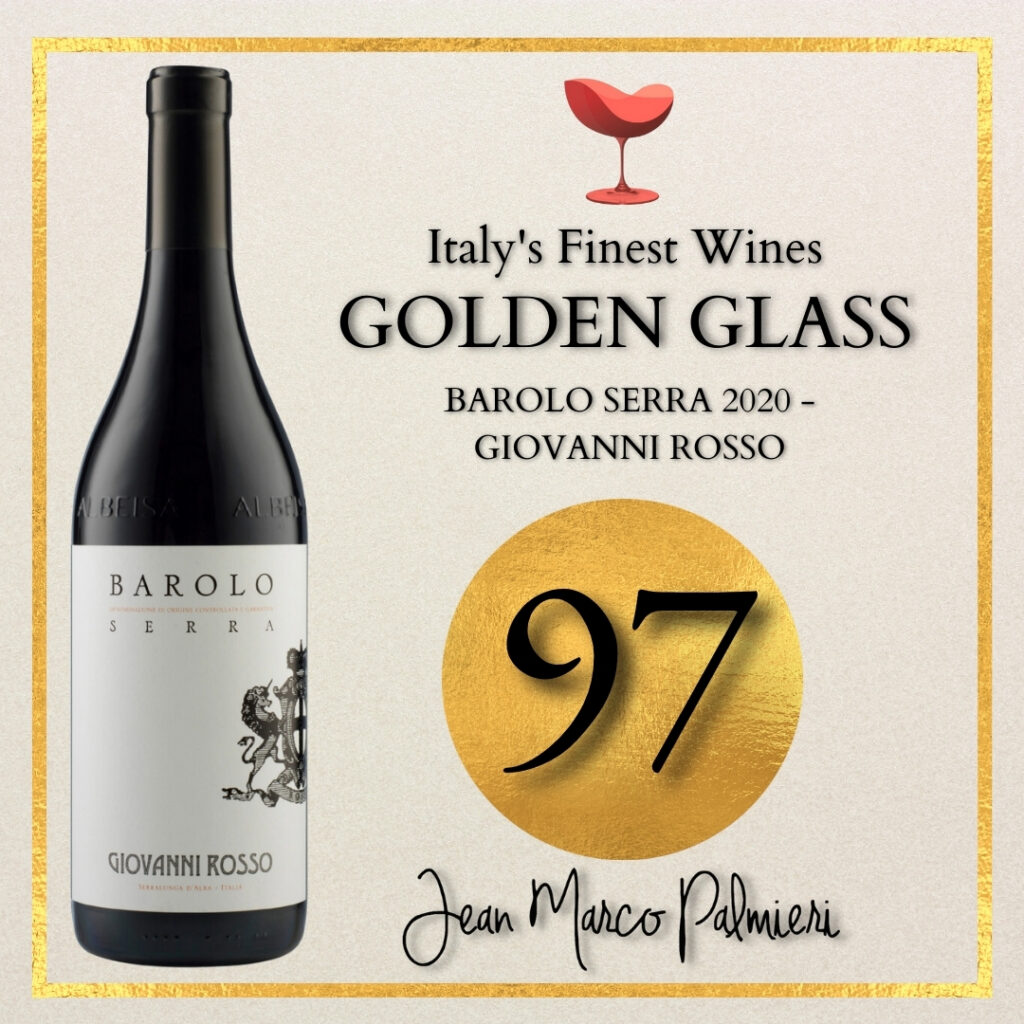
Descrizione: Si apre fine e complesso su fragranti note di lampone e melograno a cui si affiancano erbe medicinali, canfora e scorza d’arancia.
Il palato è fresco ed elegante, di grande grandissima persistenza con tannini dalla texture morbida.
Dalla vigna di Serralunga d’Alba, Giovanni Rosso presenta una virtuosa annata di Barolo, che mette in evidenza l’eleganza piuttosto che la potenza. Profumi di grande nitidezza varietale e apprezzabile anche dalla messa in commercio.
A pieno titolo tra i migliori produttori di Barolo per finezza ed equilibrio.
Zona dei Vigneti: Serralunga d’Alba (Serra)
Barolo Vigna Rionda 2017 – Massolino
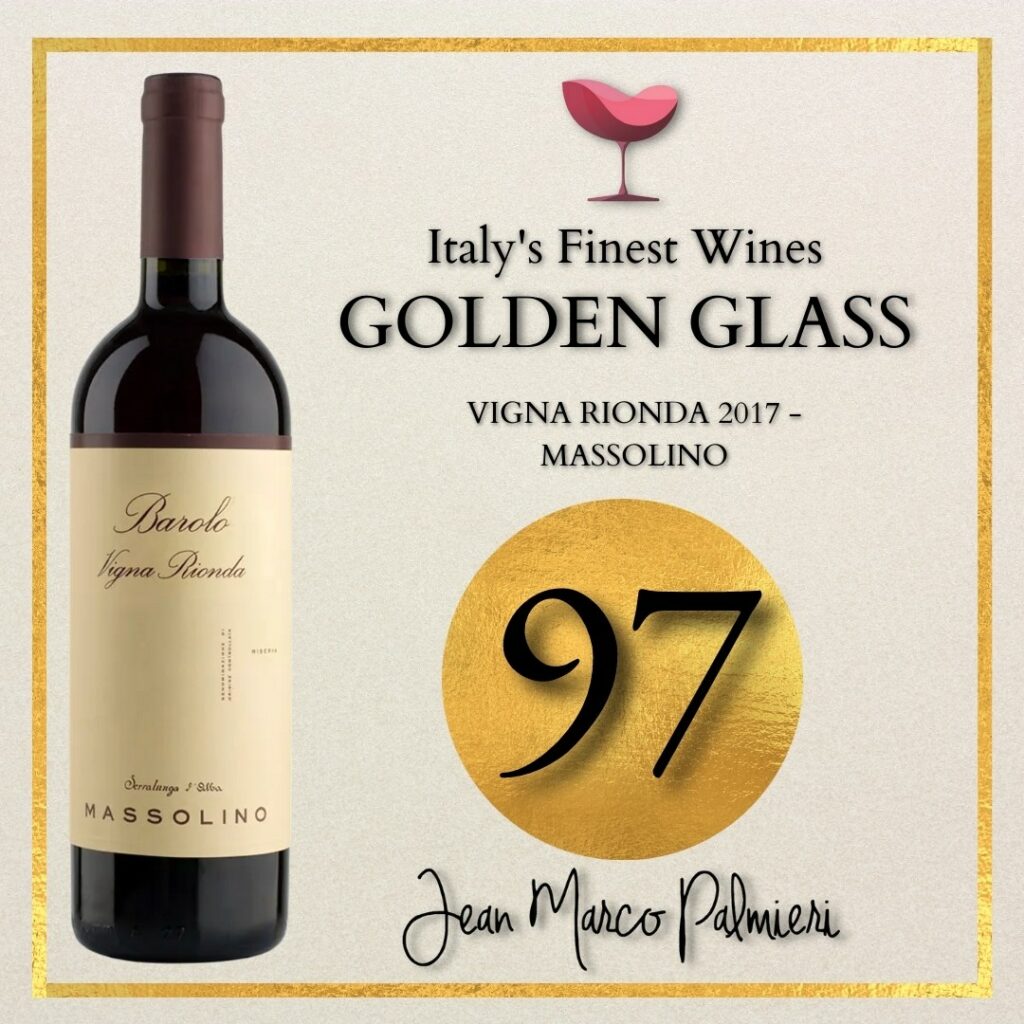
Descrizione: Il quadro aromatico è ampio e complesso e si articola tra note di ciliegia matura, radice di liquirizia ed erbe officinali.
Al naso convince per sinergia tra la componente alcolica e fenolica che creano un sorso denso, materico e di grande lunghezza, sostenuto da un’acidità di nerbo che conferisce freschezza e bevibilità.
L’iconica Vigna Rionda di Massolino convince ancora per capacità di coniugare complessità ed eleganza. Sicuramente tra le migliori interpretazioni dell’annata 2017 di Barolo.
Zona dei Vigneti: Serralunga d’Alba (Vigna Rionda)
Ravera 2019 – Marziano Abbona
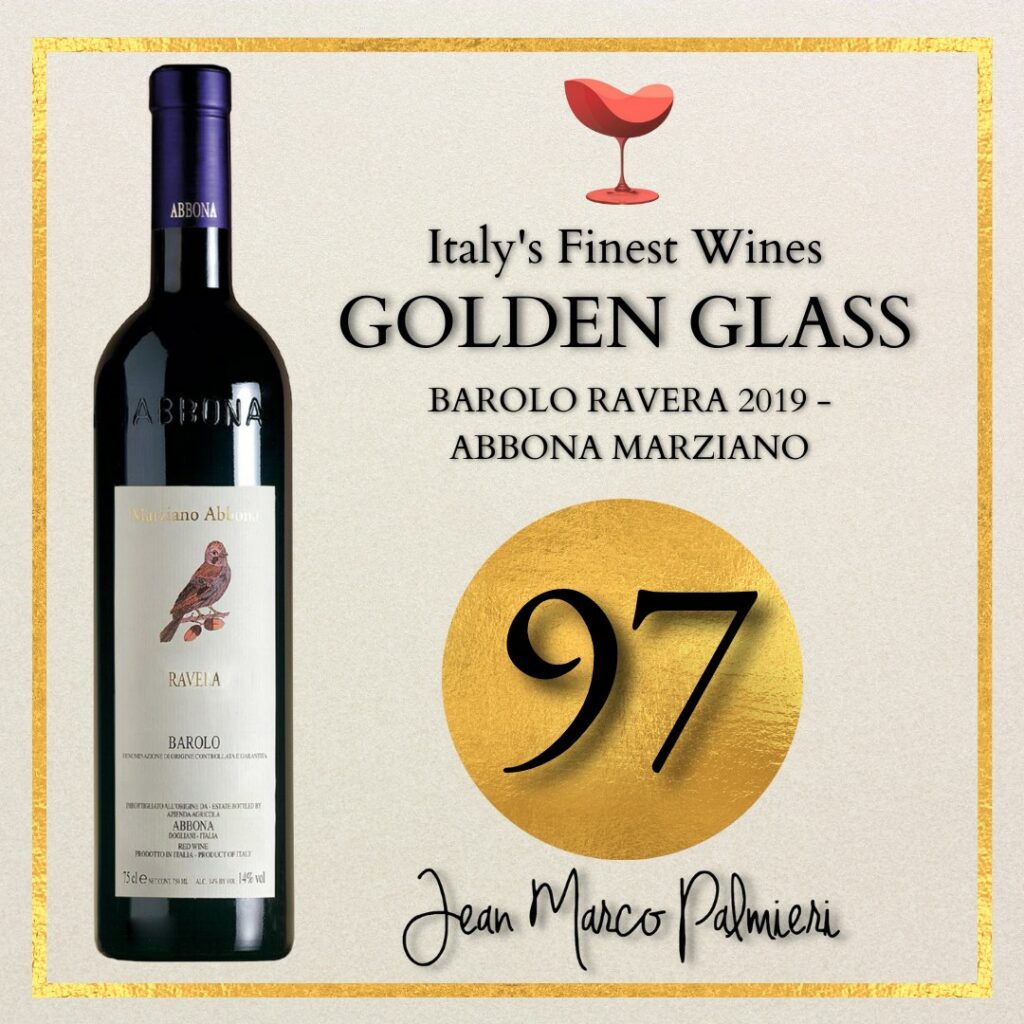
Descrizione: Al naso si avvertono in evidenza note floreali di violetta e piccoli frutti di bosco rossi e ginepro arricchite da pennellate balsamiche di radice di liquirizia, resina e note boisé ben integrate.
La beva avvolge il palato in un sorso fresco con tannini compatti perfettamente tratteggiati. Ottima scia salina sul finale che lascia la bocca fresca e appagata.
Un’interpretazione di Barolo di sensazionale finezza, esempio di come la prominente componente fenolica del Nebbiolo possa entrare in sinergia con la acidità regalando un sorso inedito e appassionante. Meritatamente tra i migliori Barolo per equilibrio.
Zona dei Vigneti: Novello (Ravera)
Barolo Boiolo 2020 – Camparo
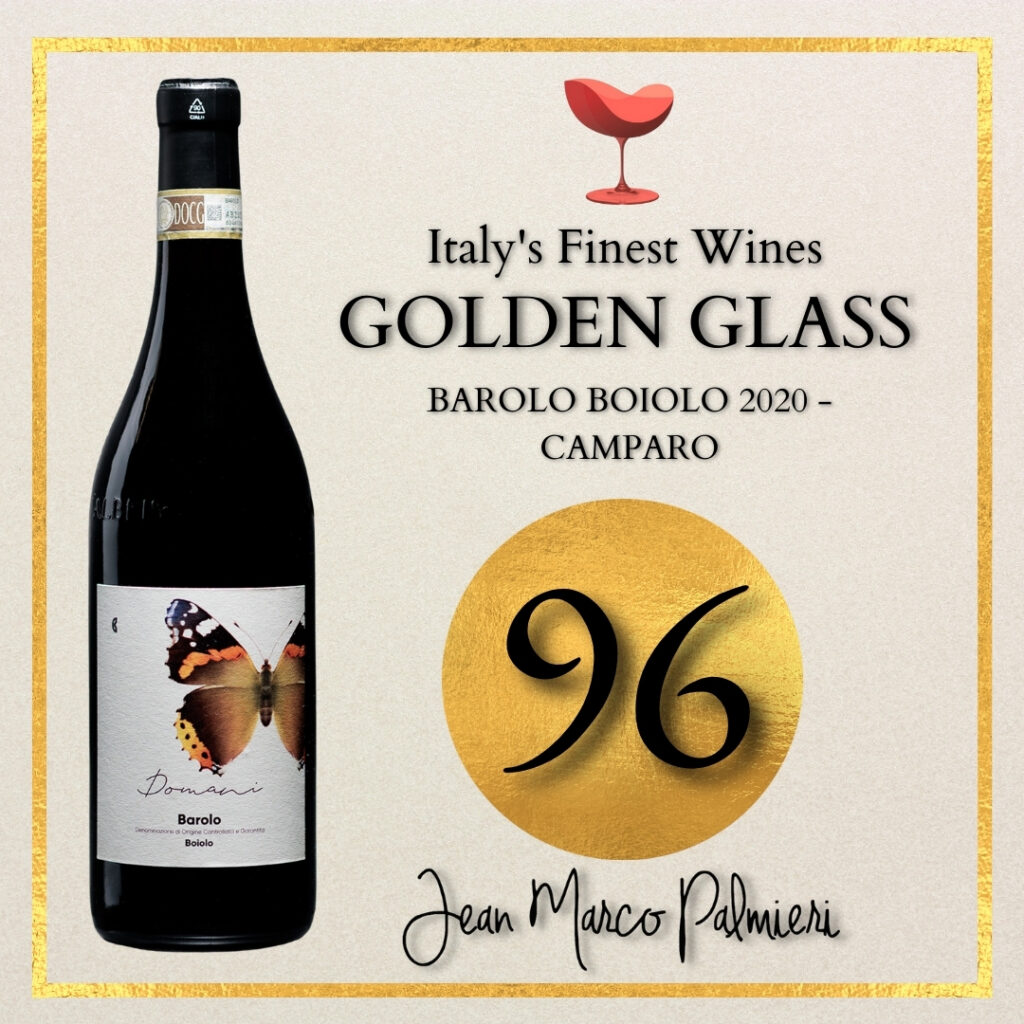
Descrizione:
Al naso ci convince con sfumature fragranti floreali e di ribes rosso impreziosite da nuances di erbe officinali e radice di liquirizia incenso.
Al palato contraddistinto per freschezza, ben calibrata con la componente fenolica di buona presenza e dalla texture ineccepibile. Finale leggermente balsamico di ottima persistenza e precisione. Matura in legno grande per 18 mesi.
Uno vino artigianale di grande carattere verticale: tra i migliori Barolo per capacità di coniugare ricchezza ed eleganza con focus sulla nitidezza del carattere varietale fruttato-floreale del Nebbiolo. Senza dubbio tra i migliori Barolo
Zona dei Vigneti: La Morra (Boiolo)
Barolo 2020 – Bricco Ambrogio – Paolo Scavino
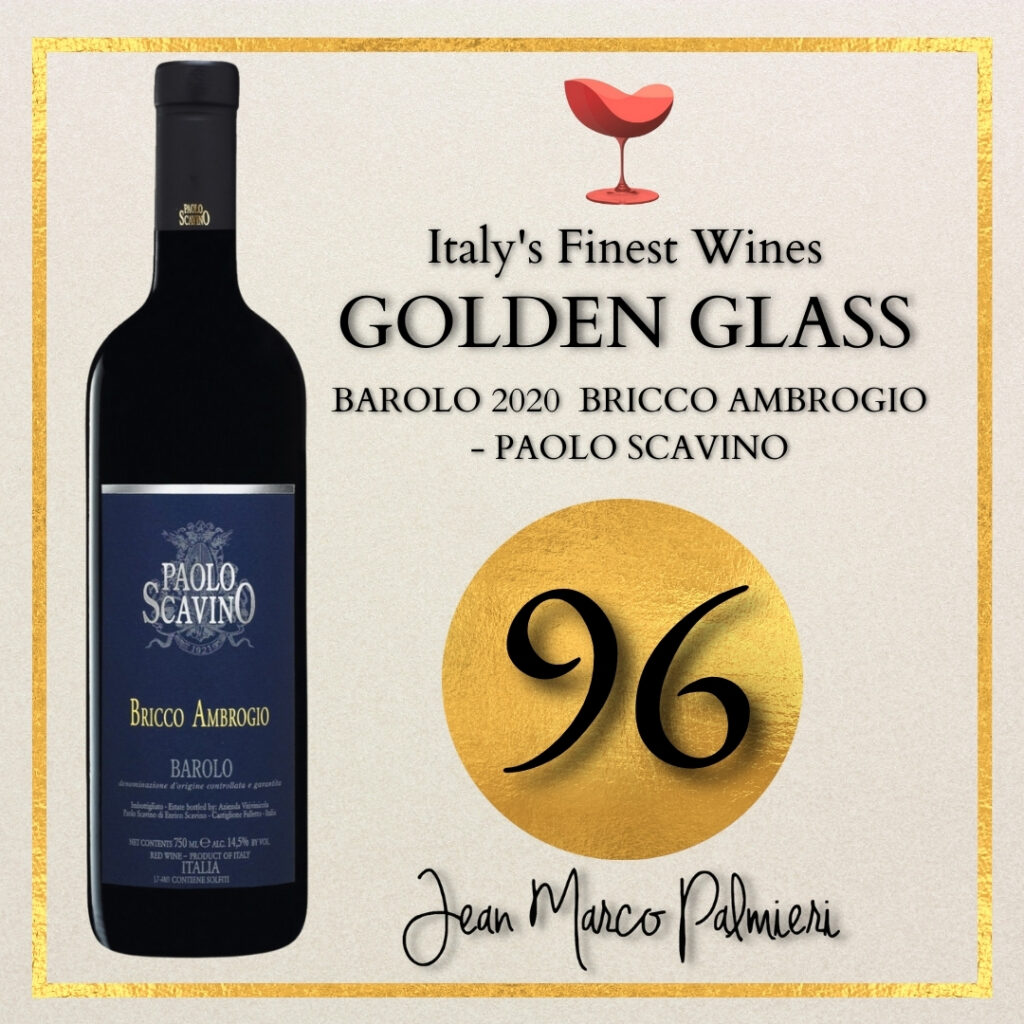
Descrizione:
Olfatto giocato inizialmente su note floreali, viola mammola e visciole impreziosite da più enigmatici sentori di nepitella selvatica, resina e timbri tostati.
Al palato è caratterizzato da tannini ben tratteggiati e compatti, spalleggiati da una piacevolissima vena sapida che dona scorrevolezza e profondità al sorso.
Tra le migliori espressioni di Barolo per equilibrio ed eleganza.
Zona dei Vigneti: Roddi (Bricco Ambrogio)
Barolo Ravera 2020 – Sordo
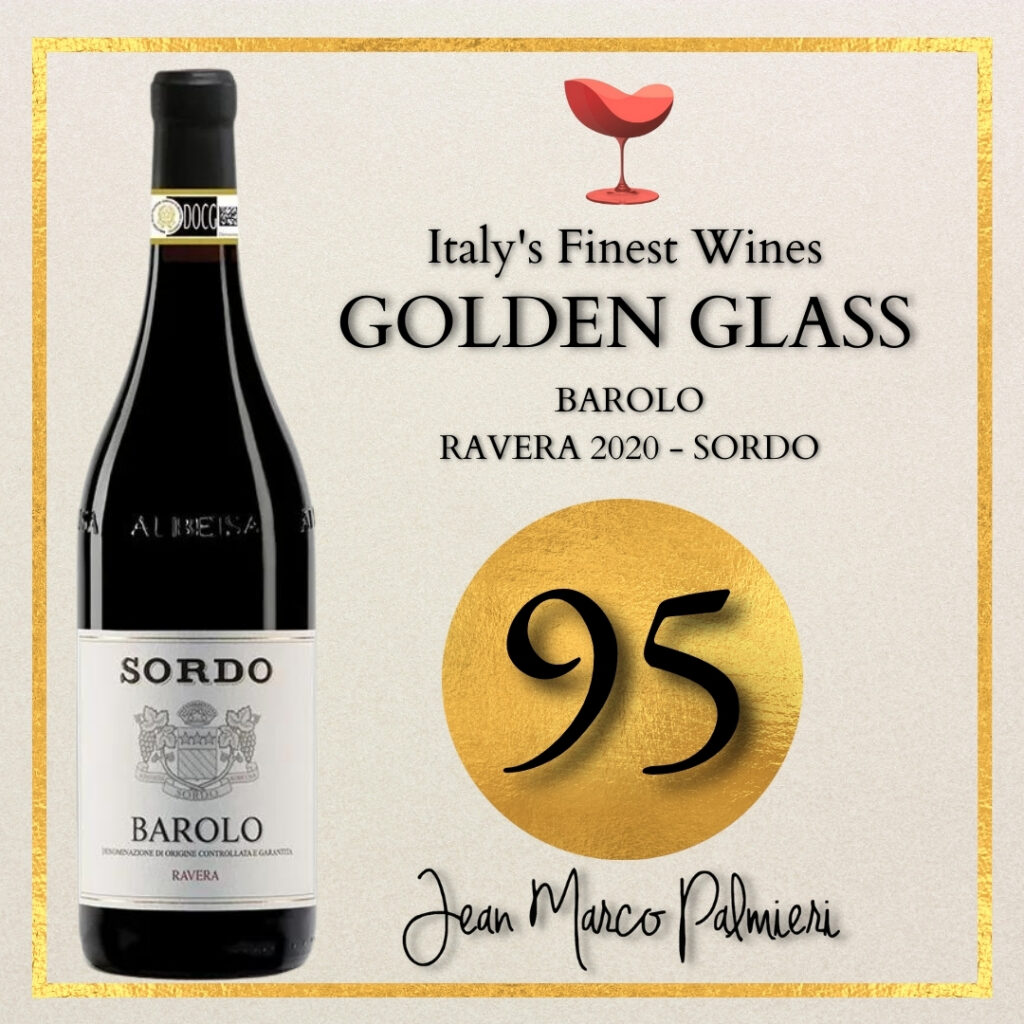
Descrizione: Stratificate sensazioni su sentori nitidi di fragoline di bosco e lampone a cui si aggiungono suggestioni erbe officinali, scorza d’arancia, reminiscenze ematiche e note empireumatiche.
Il sorso è scorrevole con trama tannica ben delineata a cui fa contraltare un’acidità scalpitante e un tannino compatto sensazionalmente tratteggiato.
Sordo presenta un’ennesima appassionante interpretazione di Barolo Ravera dal Comune di Novello. Nel millesimo 2020 contraddistinto da tannini morbidi e profumi sfaccettati di grande freschezza.
Meritatamente tra i migliori Barolo.
Zona dei Vigneti: Novello (Ravera)
Barolo Bussia 2020 – Marrone
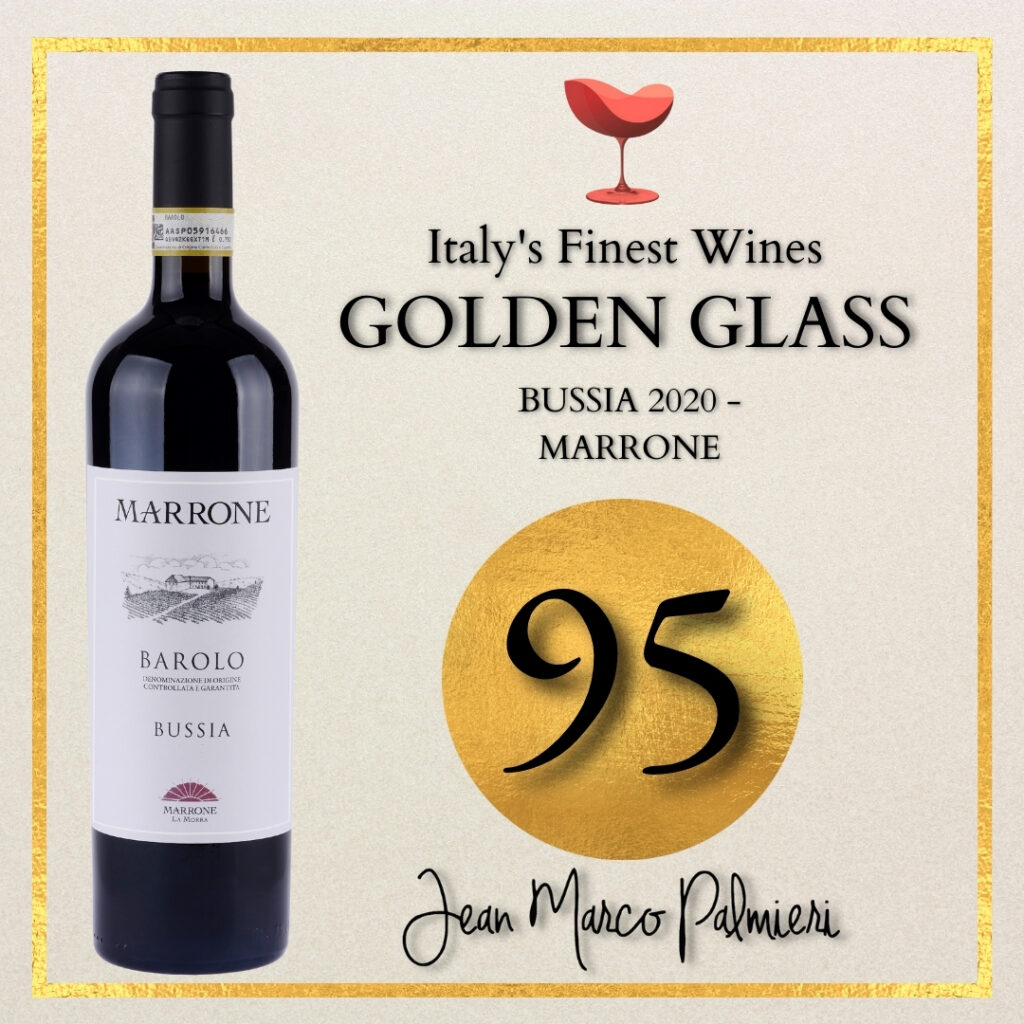
Descrizione:
Si presenta visivamente di colore rosso granato intenso, al naso seduce con nuances di bosco maturi, allusioni di prugna a cui fanno eco note boisé ben integrate, cacao e canfora.
Tannini compatti e maturi e acidità di nerbo molto coinvolgente. Ottimo potenziale di invecchiamento.
Un barolo dai profumi eloquenti e vellutato avvolgente al palato con una sensazionale persistenza. Indubbiamente tra i migliori Barolo rapporto qualità prezzo.
Zona dei Vigneti: Monforte d’Alba (Bussia)
La Serra 2020 – Marcarini
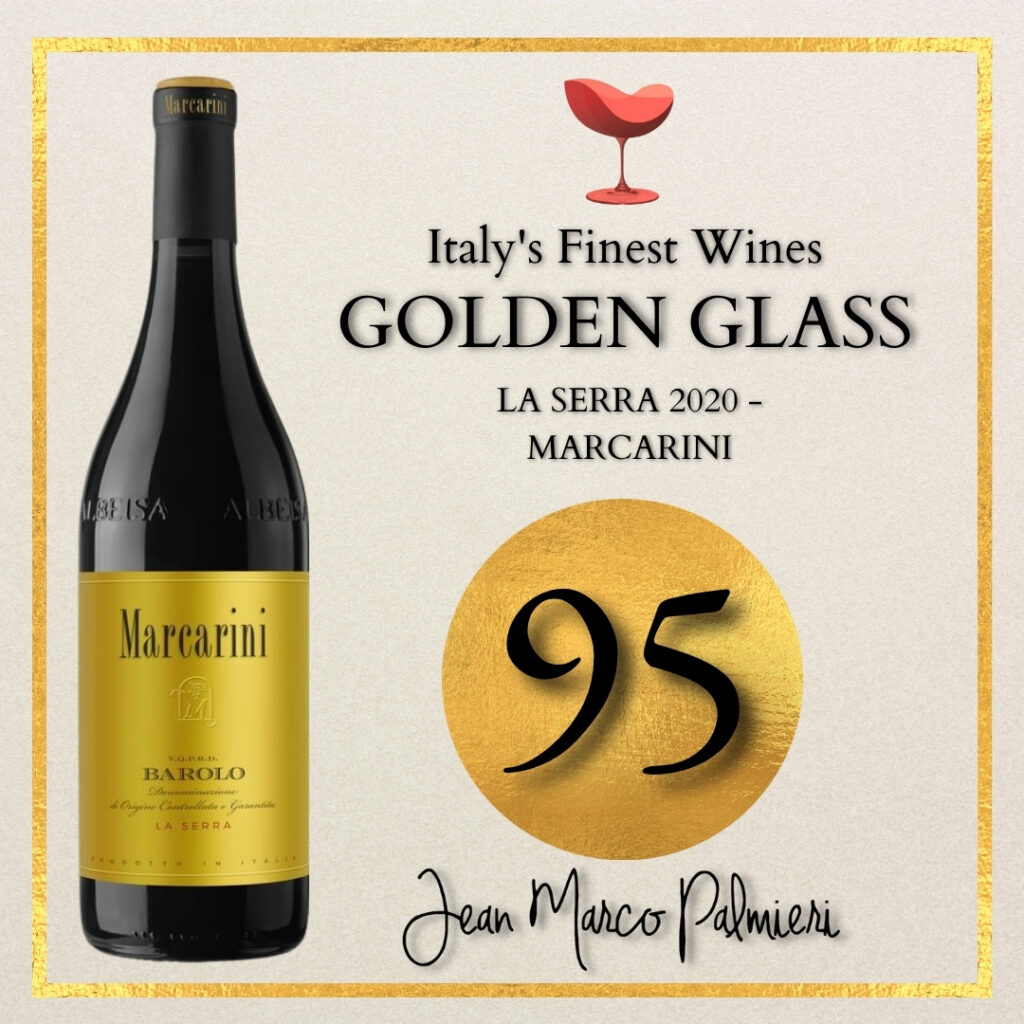
Descrizione:
Il Dosio, Barolo Fossati di Dosio presenta un bouquet intenso e fragrante che spazia di frutti rossi, spezie dolci e note floreali.
Al palato, il vino è corposo e potente, con tannini ben strutturati e un’acidità equilibrata.
Il finale è lungo e persistente, con sentori di liquirizia e tabacco che si fondono con eleganti note terziarie.
Un Barolo di grande equilibrio, che riflette il carattere distintivo del terroir di La Morra e la maestria enologica nell’interpretarlo.
Zona dei Vigneti: La Morra (La Serra)
Barolo Rocche dell’Annunziata 2019 – Andrea Oberto
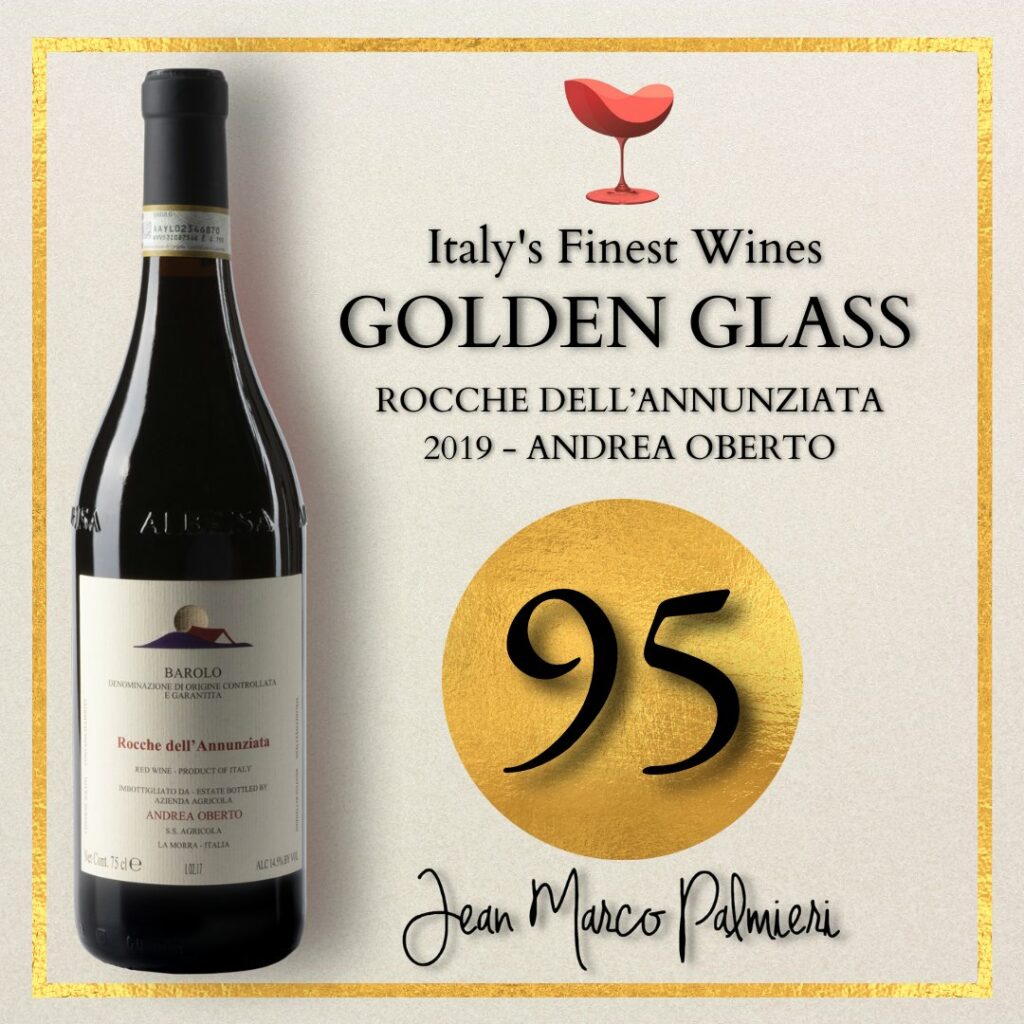
Descrizione:
Al naso si svela fine e complesso delineando intensi sentori di frutti di bosco sotto spirito, allusioni di prugna, datteri spezie dolci e tabacco e note eteree.
Al palato è avvolgente con una trama tannica molto spessa ma straordinariamente setosa legata sinergicamente a una importante spalla acida che conferisce freschezza.
Un vino voluminoso e armonico dalla sensazionale persistenza balsamica. Meritatamente tra i migliori Barolo.
Zona dei Vigneti: La Morra (Rocche dell’Annunziata)
Barolo ‘Sorano’ 2020 – Claudio Alario
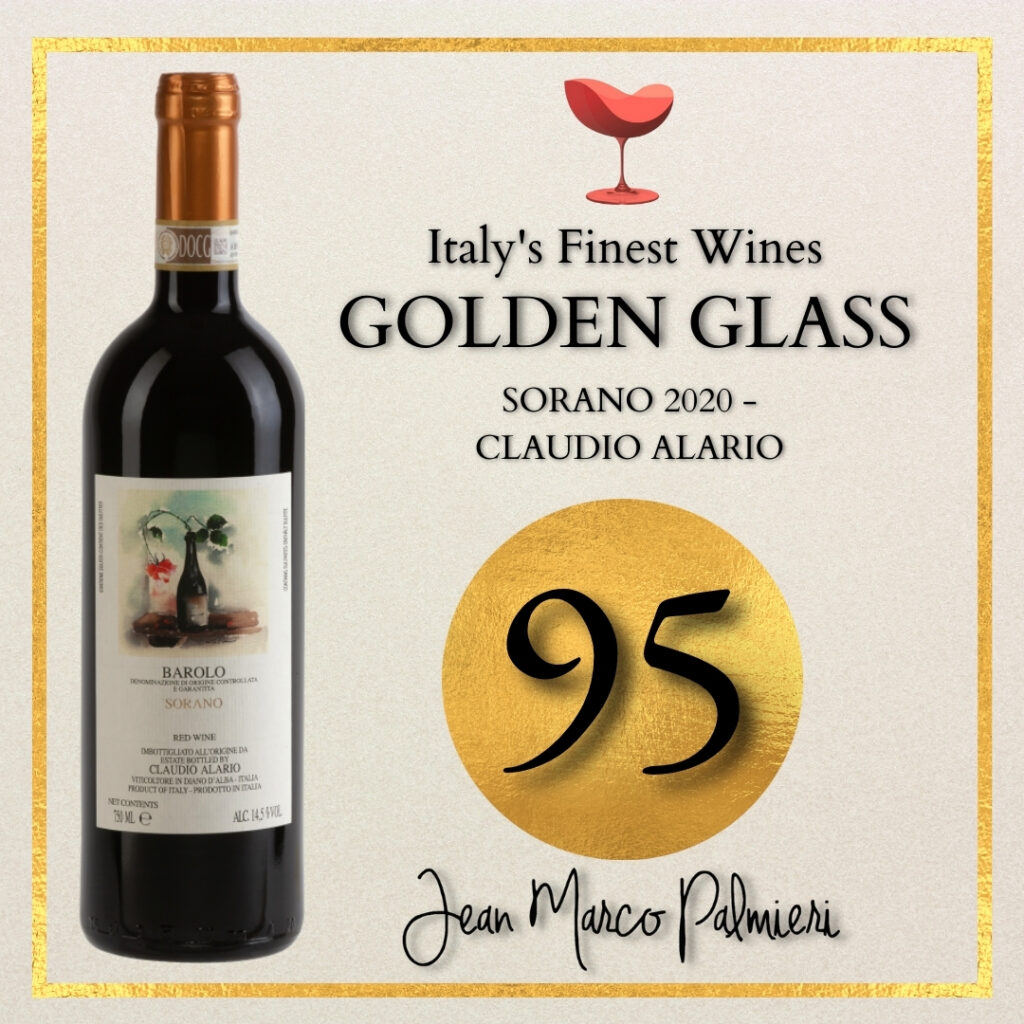
Descrizione: Il bouquet è caratterizzato da note di piccoli frutti rossi in confettura, impreziosite da pennellate terrose e sentori terziari di grafite, liquirizia e spezie autunnali.
Il sorso è pieno e avvolgente, sorretto da tannini ben tratteggiati e da una spalla acida che culmina in un finale fresco e di piacevolissima persistenza.
Un’interpretazione di Barolo che esprime la quintessenza del potenziale del Nebbiolo.
Sicuramente tra i migliori Barolo per il carattere raffinato e l’estratto poderoso che ci fa presumere un ottimo potenziale d’invecchiamento.
Zona dei Vigneti: Serralunga d’Alba (Sorano)
Barolo Monvigliero Riserva 2017 – Castello di Verduno
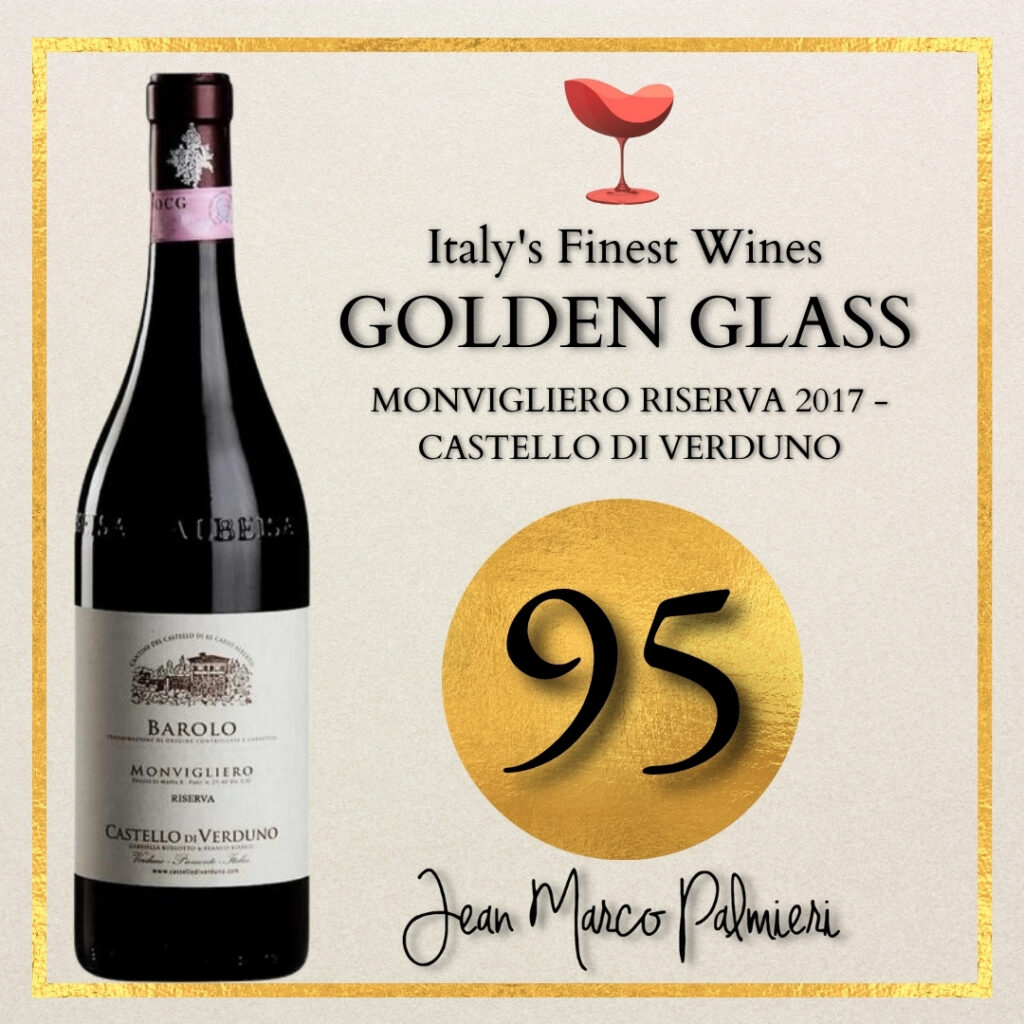
Descrizione:
Il naso è slanciato, con un frutto ben delineato a cui si uniscono sensazioni di pot-pourri di rosa e viola e nuances di mentuccia selvatica e liquirizia.
Al palato è succoso, ricco, con un finale caldo e morbido dai lunghi echi balsamici.
Un’interpretazione dal bouquet fragrante e sfaccettato, preludio di un sorso vibrante in cui le componenti fenoliche, alcoliche e di acidità sono magistralmente calibrate.
Zona dei Vigneti: Verduno (Monvigliero)
Barolo Mosconi 2018 – Bera
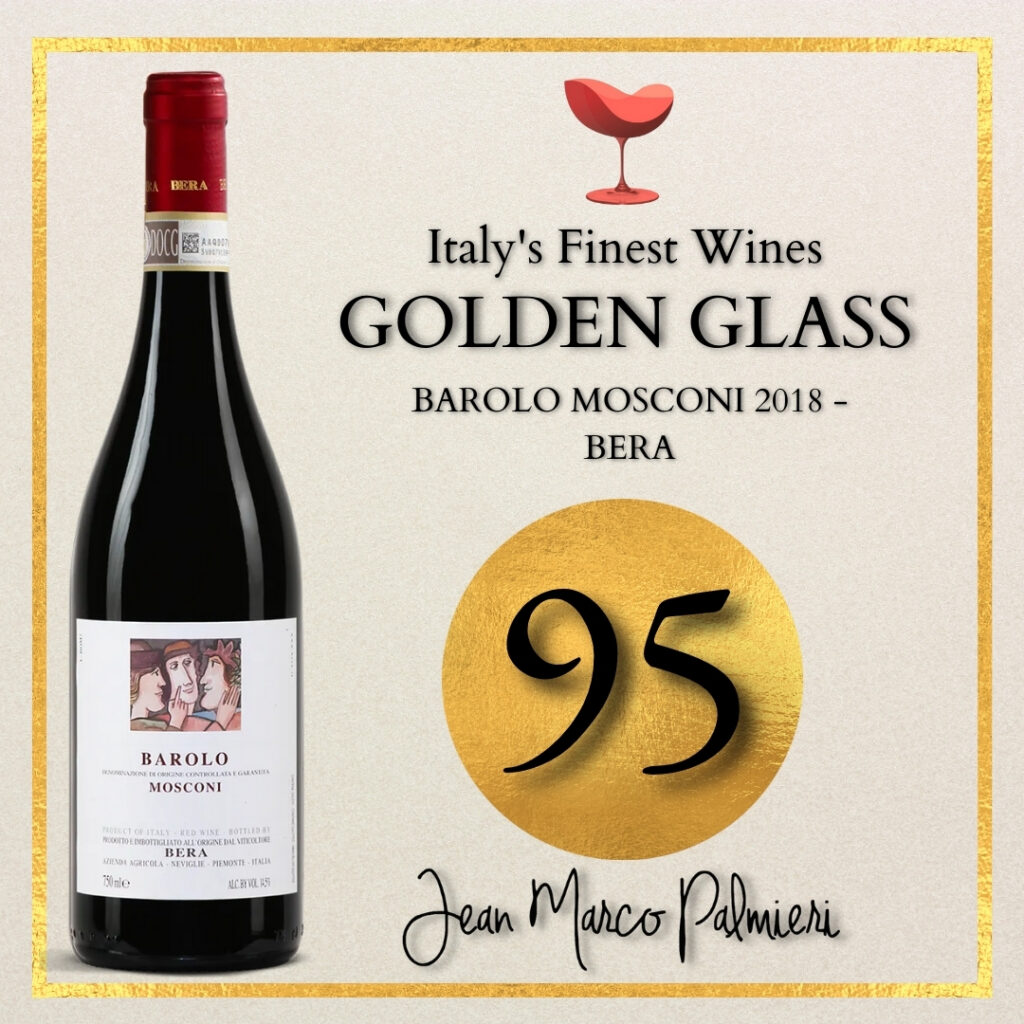
Descrizione:
Il Barolo ‘Mosconi’ dalle vigne di Monforte d’Alba emana sentori di frutti rossi maturi e spezie dolci al naso, con un sottofondo di sfumature floreali e terrose.
Al palato, il vino è pieno e avvolgente, con tannini possenti e un finale lungo e di grande persistenza
Un’interpretazione classica del Nebbiolo, che dimostra il carattere distintivo del vitigno. Meritatamente tra i migliori Barolo per carattere autentico e artigianale.
Zona dei Vigneti: Monforte d’Alba (Mosconi)
Barolo 2019 – Cascina Fontana

Descrizione:
Si articola olfattivamente su intense note di fiori rossi e frutti di bosco, a cui seguono successioni di spezie dolci, erbe officinali e scorza d’arancia.
Al palato è fresco e avvolgente, con tannini compatti che evolvono verso un finale di buona persistenza e dagli echi speziati.
Un vino di grande equilibrio che enfatizza il carattere varietale e floreale del Nebbiolo.
Tra i migliori Barolo per finezza olfattiva e bevibilità.
Zona dei Vigneti: Castiglione Falletto, Monforte d’Alba e La Morra
Cannubi 2019 – Reva
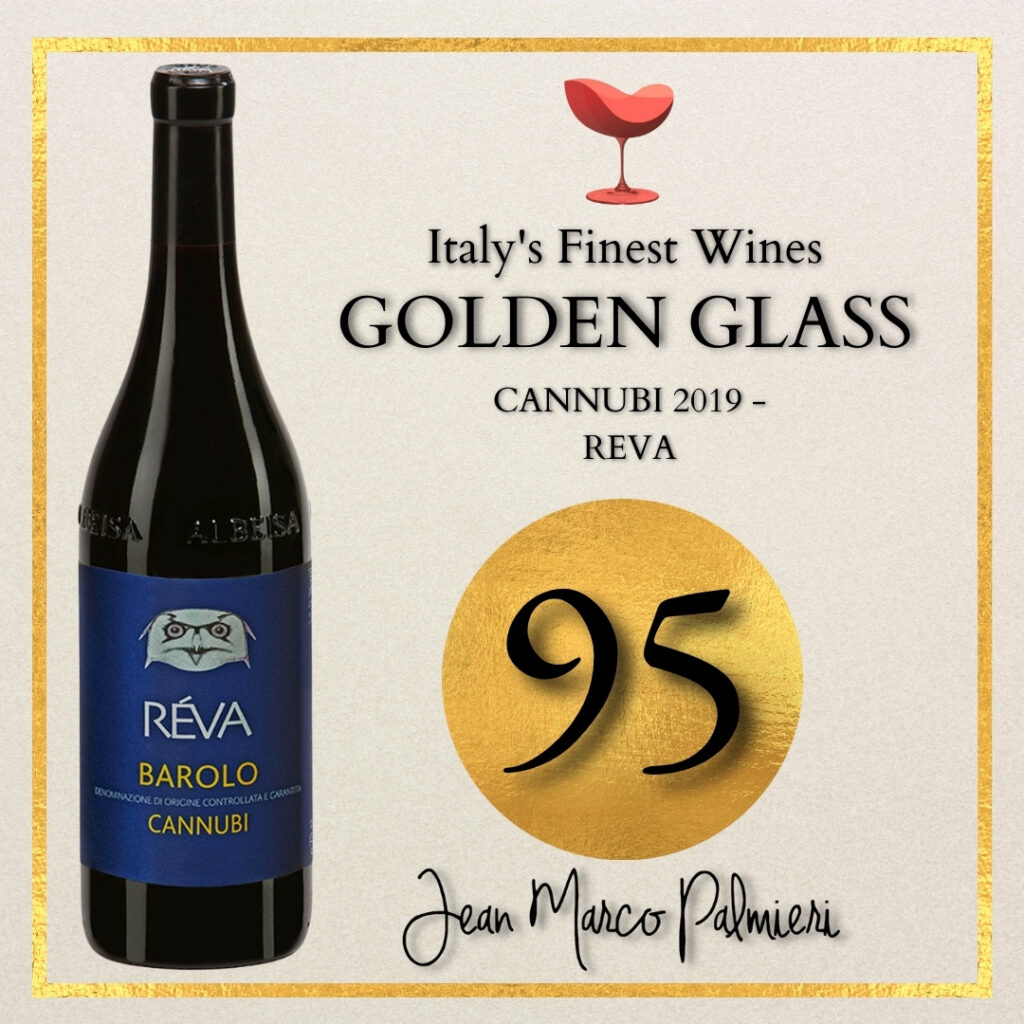
Descrizione:
Si articola olfattivamente su penetranti note di lampone selvatico e prugne rosse, a cui seguono successioni di polvere di caffè, cacao fondente e scorza d’arancia candita.
Il sorso è espansivo e avvolgente, la tessitura tannica è compatta di ottima progressione e si evolve verso un finale di buona persistenza impreziosito da echi balsamici
Ottenuto da vinificazioni a basso intervento, il Barolo di Reva di conferma come una delle più interessanti interpretazioni di Cannubi in circolazione per la capacità di coniugare complessità ed eleganza.
Zona dei Vigneti: Barolo (Cannubi)
Barolo Le Coste di Monforte – Lalù
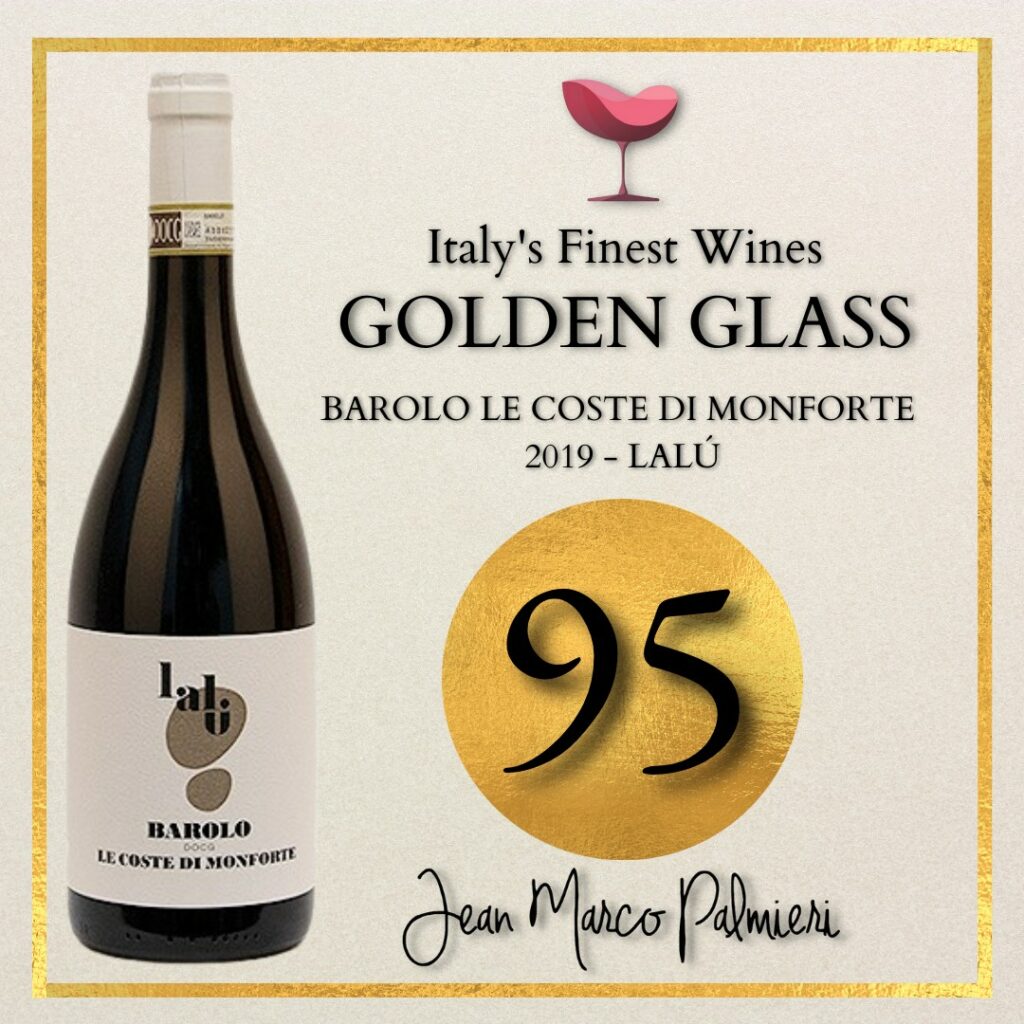
Descrizione:
Si apre olfattivamente con un frutto molto frontale lamponi, ciliegia succosa a cui susseguono suggestioni di spezie dolci, mentuccia selvatica e note tostate.
Al palato è avvolgente con una spiccata acidità di nerbo che dona bevibilità e tannini dolci e compatti che si evolvono in progressione verso un finale di ottima struttura e persistenza.
Inebriante e longilineo, l’emergente cantina Lalù realizza uno tra i migliori Barolo per carattere originale, freschezza e bevibilità.
Zona dei Vigneti: Monforte d’Alba (Le Coste di Monforte)
Rocche dell’Annunziata 2019 – Trediberri
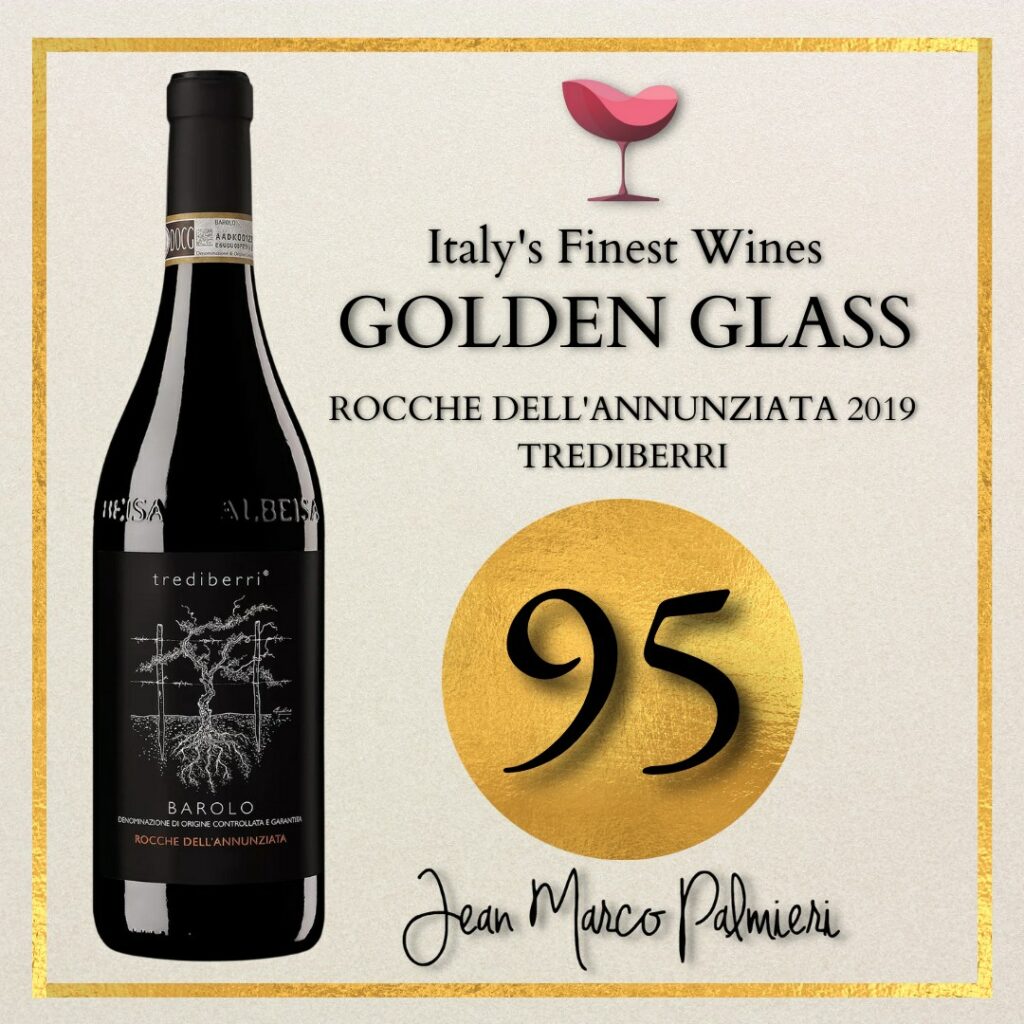
Descrizione:
Al naso frutto frontale molto fresco ed intenso lasciano spazio a toni più austeri di goudron e note speziate e tostate. Al palato è vibrante e di ottima persistenza, magistralmente equilibrato tra le componenti morbide e dure.
Fermentazione alcolica in cemento per 12-14 giorni. Affinamento per circa 20 mesi in botti da 25 HL e 52 HL.
Tripudio di frutta e balsamicità, a pieno titolo tra i migliori Barolo per capacità di coniugare complessità e bevibilità.
Zona dei Vigneti: La Morra (Rocche dell’Annunziata)
Barolo ‘Serradenari’ 2019 – Giulia Negri
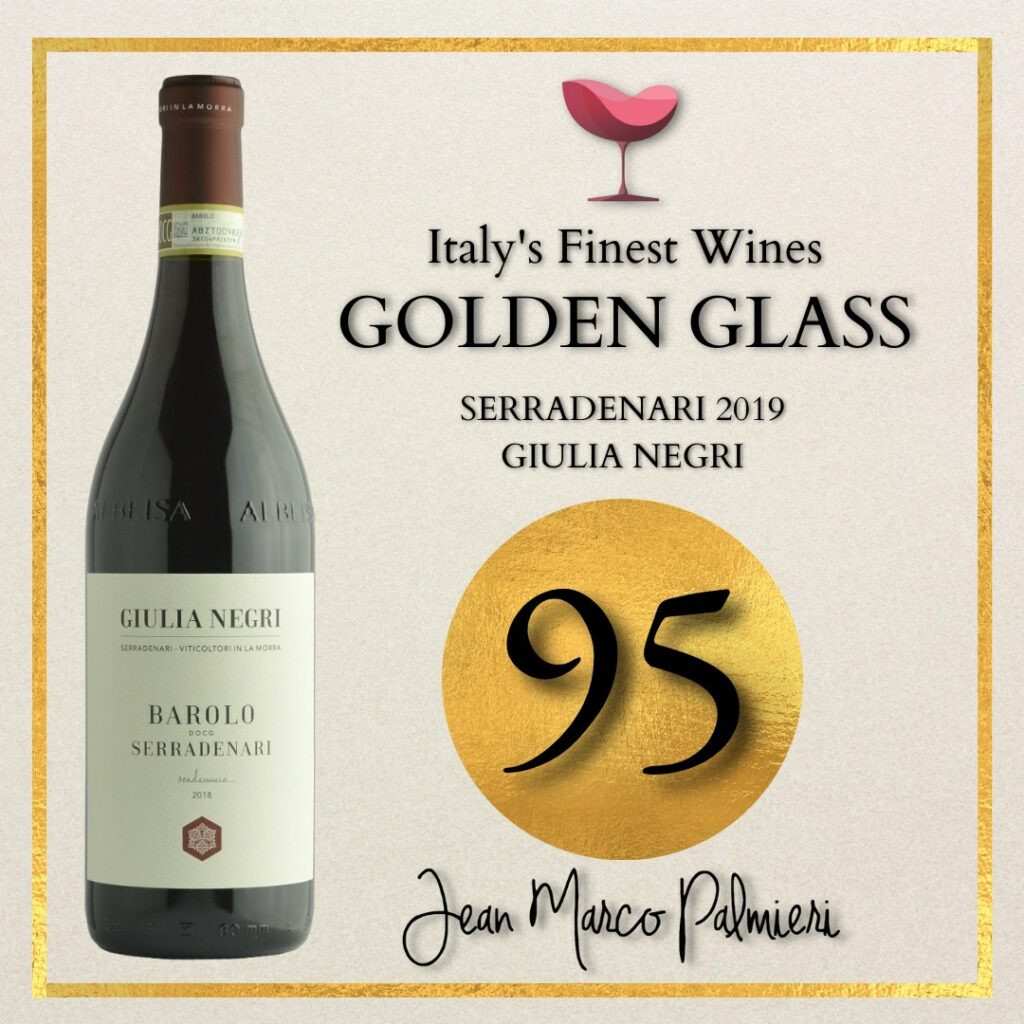
Descrizione:
Al naso si apre ampio e complesso spaziando da intensi sentori di frutti rossi, arancia sanguinella, erbe medicinali e canfora.
Al palato di media concentrazione fenolica, spicca in risalto la componente acida che conferisce grande freschezza e bevibilità. Fermentazione spontanea in tini troncoconici, e macerazione per circa 40 giorni. Il vino affina poi 30 mesi in botti di rovere di slavonia da 25 ettolitri.
Giulia Negri con la vigna più alta della La Morra realizza un Barolo dal carattere marcatamente verticale in cui si evidenzia l’eloquenza dei profumi varietali del Nebbiolo. Meritatamente tra i migliori per stile unico e finezza olfattiva.
Zona dei Vigneti: La Morra (Serradenari)
Barolo 2019 – Ca’ di Press
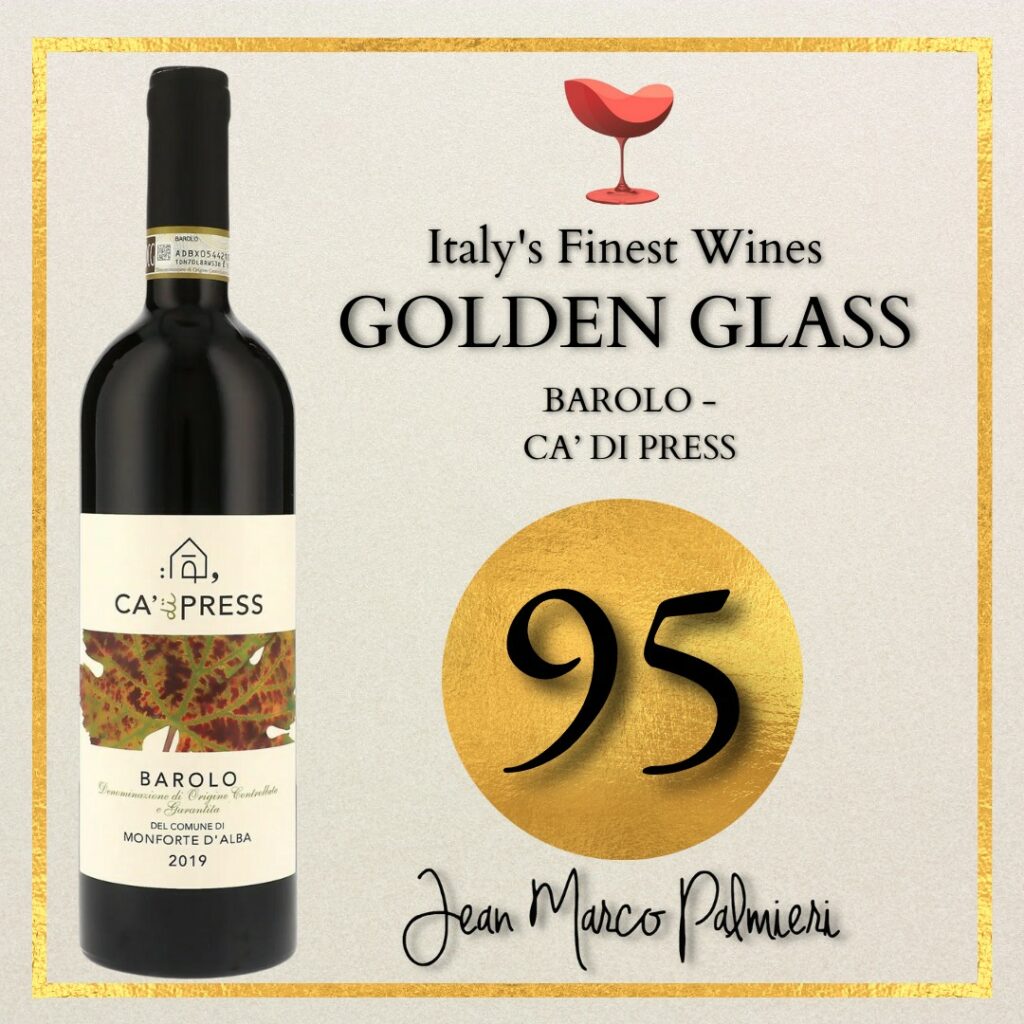
Descrizione:
Il bouquet si articola su delicate sfumature di violette, resina di pino proseguendo la sua evoluzione verso note balsamiche, incenso e cacao con ritorni di erbe officinali.
La bocca è piena e asciutta, i tannini scultorei avvolgono morbidamente il palato e sono ben bilanciati da un’acidità di nerbo. Il finale è di grande persistenza con delicati rimandi speziati.
Il Barolo di Ca di Press ottenuto dai vigneti di Monforte d’Alba contempera sapientemente note floreali e fragranti con lunghezza e complessità al palato. Meritatamente tra i migliori rapporto qualità prezzo.
Zona dei Vigneti: Monforte d’Alba
Storia del Barolo
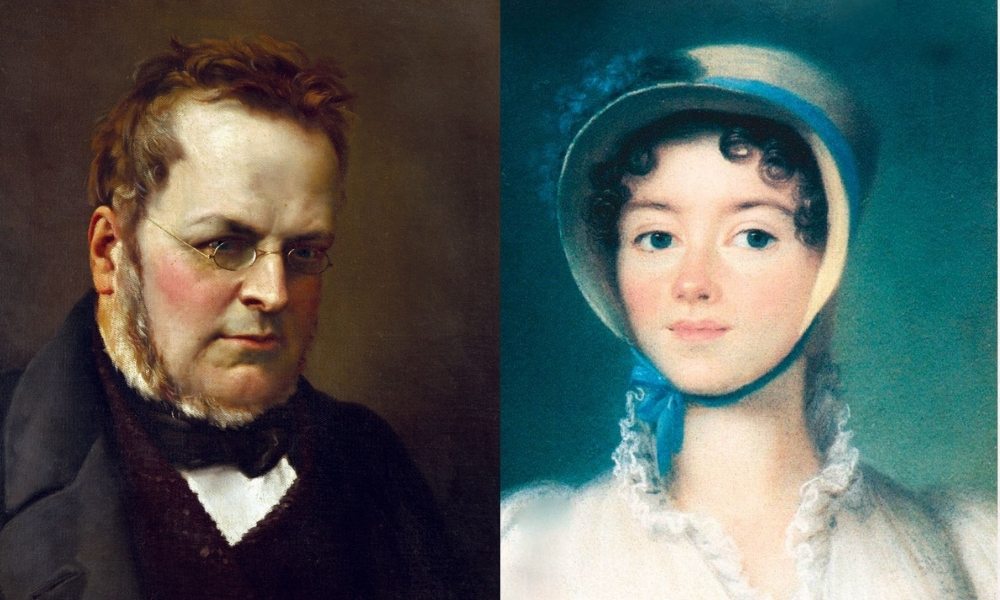
La storia del vino Barolo inizia in epoca preromana, con le prime coltivazioni rudimentali di vite dei Liguri Statielli. Il Piemonte iniziò attirare le attenzioni dei Galli, e successivamente dei Romani, per la qualità del vino prodotto nella zona di Alba.
Si produceva vino Barol, da uve Nebbiolo. Thomas Jefferson lo descriveva come un vino “quasi amabile come il Bordeaux e vivace come lo Champagne”, quindi frizzante e dolce (molto diverso da come lo conosciamo oggi).
La storia del Barolo ha una sua svolta con l’enologo francese Louis Ouart che, grazie all’impulso di Juliette Colbert e di Camillo Benso di Cavour, imbottigliò un vino rosso secco e fermo, moderno ed elegante. Cavour voleva un vino che potesse allietare le esigenti corti europee e competere con i grandi vini francesi del tempo: è il 1844 e sta per iniziare il fenomeno Barolo.

Successivamente, tra le due guerre mondiali la popolarità del Barolo esplose, furono impiantati nuovi vigneti e il vino Barolo si affermò come uno dei vini più grandi al mondo. Nel 1927 vennero definite nella Gazzetta Ufficiale le zone di produzione del vino Barolo, e nel 1980 il Barolo diventa vino DOCG.
La storia del Barolo prosegue a partire dagli anni 80: le Langhe sono in pieno fermento e le tecniche enologiche si adeguano al passo coi tempi.
Alla vinificazione tradizionale del Barolo si inizia a contrapporre la scuola del modernisti (tra questi i famosi rivoluzionari Barolo Boys). Quest’ultimi iniziarono ad adottare vinificazione più brevi e affinamenti in barriques, dando luce a vini più colorati, meno tannici e dagli aromi di spezie dolci.

Di conseguenza, queste interpretazioni dal carattere internazionale crearono non poche critiche da parte dei tradizionalisti, come venne reso celebre dal famoso “j’accuse” del Barolo di Bartolo Mascarello del 1996 che recitava: “No Barriques, No Berlusconi“.
In sintesi, oggi le aspre contrapposizioni sembrano essersi affievolite mentre l’unico vincitore è rimasto il Barolo. Divenuto uno dei vini più amati a livello internazionale grazie al suo fascino unico e inimitabile.
Terroirs e crus del Barolo
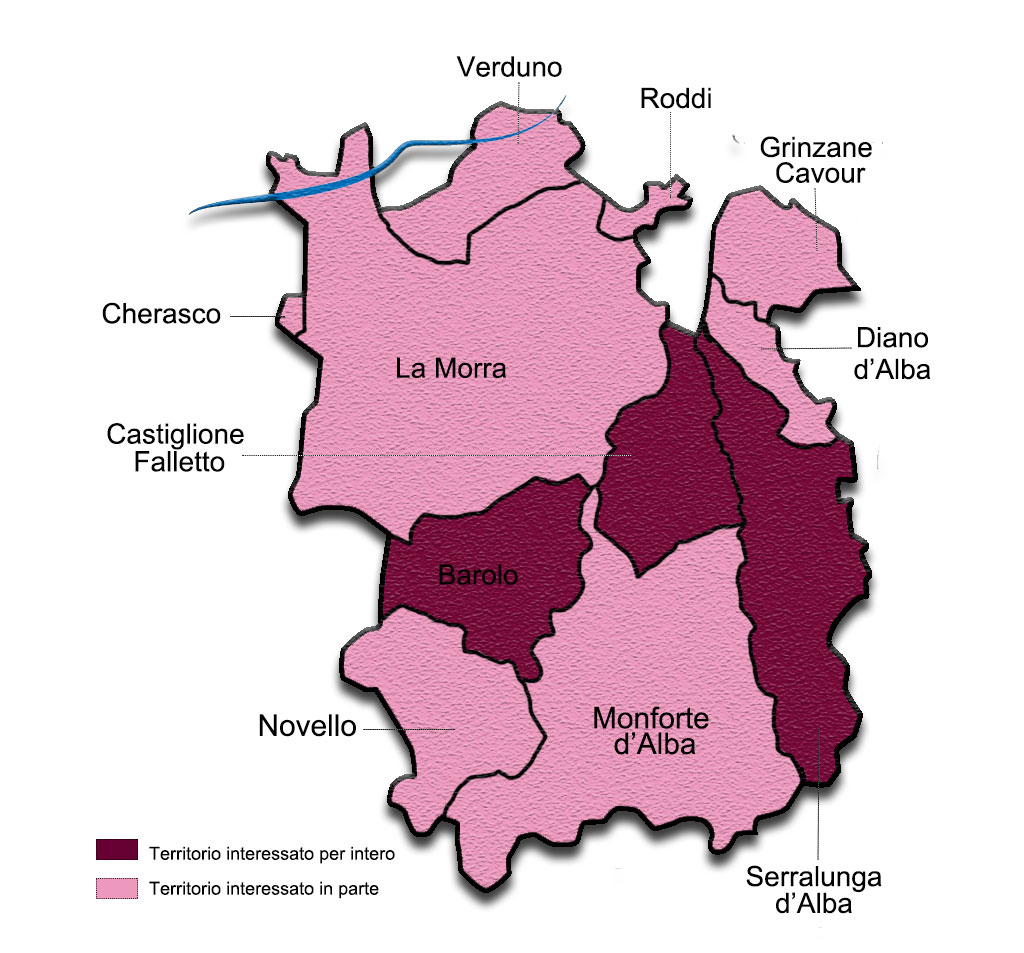
La zona del Barolo è caratterizzata da una grande variabilità geologica. Infatti, la stratificazione del suolo ha origini marine: le colline delle Langhe emergono infatti da un antico golfo marino, dove sono sedimentate nel corso dei secoli arenarie e argille.
Oggi si possono identificare tre macro-tipologie di suolo: la più antica è quella di Serralunga d’Alba e di una parte di Monforte, caratterizzata da formazioni di Lequio. Nei dintorni di Monforte d’Alba e Castiglione Falletto il suolo è composto prevalentemente Arenarie di Diano originate in seguito ad antichissime frane sottomarine. Tra Barolo e La Morra troviamo invece le caratteristiche marne di Sant’Agata.
Quest’ultima, è la tipologia di suolo più diffusa nelle Langhe e presenta una discreta variabilità tra la componente di sabbia, limo e argilla.
Tra i cru di Barolo possiamo citare alcuni tra i più rinomati come Cannubi, Bussia, Brunate, Francia, Monprivato, Ravera, Villero, Monvigliero, il Prapò, Rocche di Annunziata, Bricco delle Viole, Vigna Rionda, Serradenari e Ornato.
Quali sono i migliori Barolo?

Quali sono i migliori Barolo? Scegliere è un impresa ardua, che comunque soggiace inevitabilmente ai limiti di un’opinione soggettiva, che come tale, per definizione, è deficitaria e arbitraria.
Noi abbiamo semplicemente stilato una lista nostre delle interpretazioni preferite secondo le nostre valutazioni. Rimane tuttavia imprescindibile sottolineare che il vino, non nasce come uno status symbol, da esibire o sfoggiare coram populo.
Ma per emozionarci ed essere condiviso in modo genuino con le persone che amiamo, legandosi a situazioni contingenti e ai momenti irripetibili e intimi della nostra vita.
Pertanto, vi invitiamo a visitare cantine e conoscere i produttori che producono vini nella loro unicità, affinché possiate scoprire e scegliere autonomamente il vino che possa essere annoverato per voi tra i vostri personali vini preferiti. Se avete avuto la pazienza di leggere fin qua vi ringrazio per l’attenzione, ma adesso è il tempo riempire i calici e recidere le speranze lontane, e quindi:
Cheers, Salute, Santé
Jean Marco Palmieri
ABBINAMENTI CIBO BAROLO
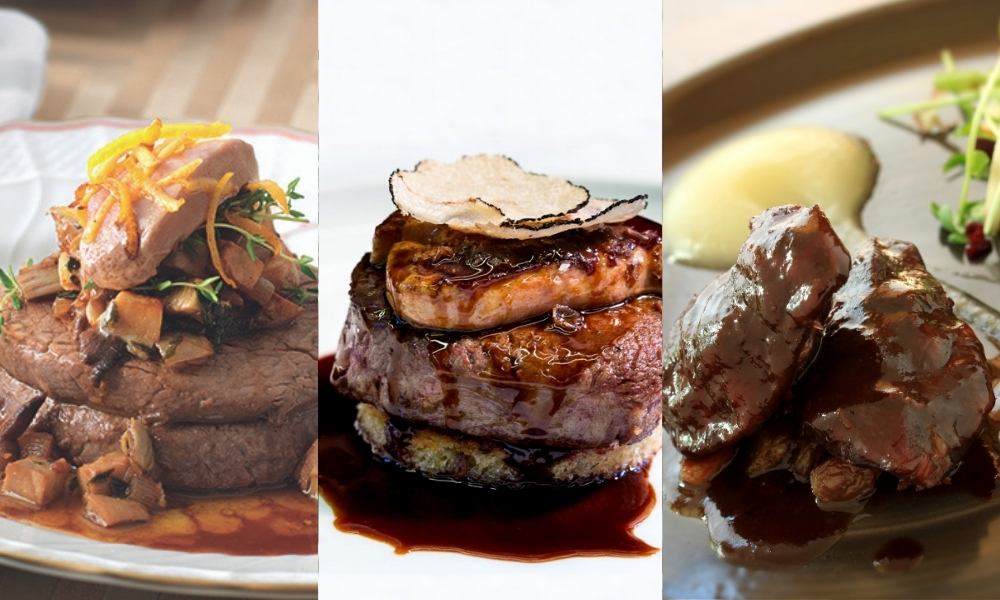
Cosa abbinare al Barolo? Adesso che abbiamo visto quali sono i migliori vini Barolo e i migliori produttori di Barolo, la domanda sorge spontanea: quali sono i migliori abbinamenti cibo-Barolo?
Scopri i migliori abbinamenti cibo Barolo e le regole da seguire per abbinare il Barolo ed il Barolo Chinato nell’articolo dedicato.





